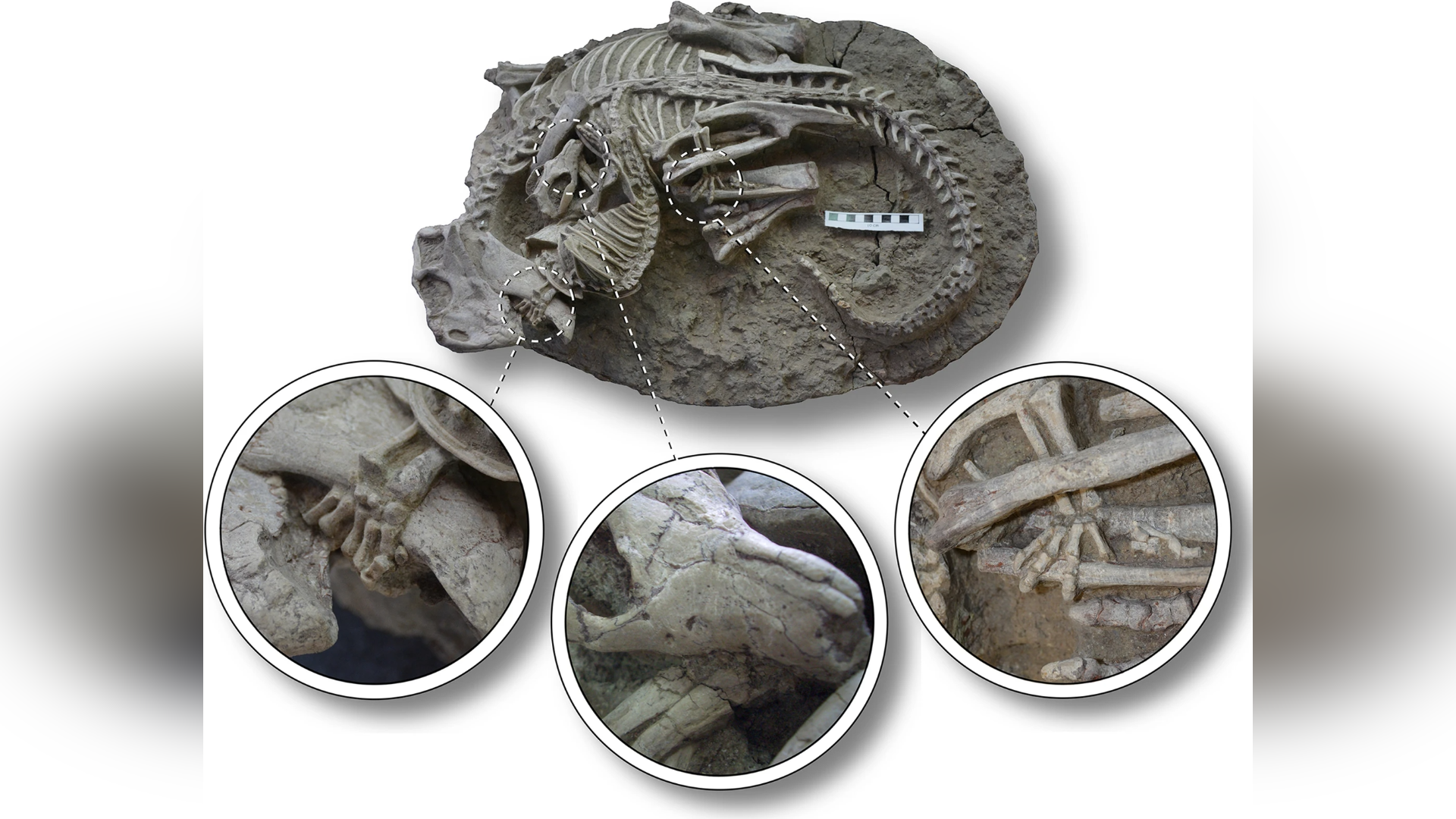Scientists Stunned By Fossilized Death Match Between Beaked Dinosaur and Prehistoric Proto-Wolverine

Scientific Reports
Science nerds the world over were stunned by the revelation of a fossil that shows a “beaked dinosaur” getting chomped by a prehistoric mammal — frozen in time for, like, millions of years?
It ain’t exactly Jurassic Park, but to archaeologists and the like, the prehistoric tableau that was found frozen in stone may as well be Chris Pratt directing a velociraptor attack from the back of his jungle Ducati — especially the way Gizmodo’s Isaac Schultz describes it:
About 125 million years ago, a young mammal about the size of a possum bit down on the side of a beaked dinosaur nearly three times its size. The animals died like that, entangled and at odds with each other, a fossilized tableau of the dinosaurian-mammalian power shift that would finally come about 60 million years later.
The find was revealed in a paper published last week, along with the deets:
The entombed individuals represent the small ceratopsian dinosaur Psittacosaurus lujiatunensis entangled with the even smaller gobiconodontid mammal Repenomamus robustus (Fig. 1, Supplementary Fig. S6).
The dinosaur skeleton is complete. The skull preserves all three autapomorphies that diagnose P. lujiatunensis (prefrontal width less than 50% that of the nasal, quadratojugal-squamosal contact along the anterior margin of the quadrate shaft, jugal-quadrate contact posteroventral to the laterotemporal fenestra; Supplementary Fig. S7)14. The dinosaur is lying prone, with its hindlimbs folded on either side of the body. The neck and tail curl to the dinosaur’s left. Based on femoral circumference scaling15 and applied developmental mass extrapolation16, we estimate its body mass to have been 10.6 ± 6.0 kg at time of death. We estimate its age to have been at least 6.5 years, and more likely closer to 10 years, based on established femur length-age relationships17,18.
The body of the mammal coils to the right and sits atop the left side of the dinosaur. The skeleton is nearly complete; only the distal end of the tail is missing. In life, the mammal would have been several centimeters longer than preserved (Table 1). Although diagnostic dental and mandibular characters are poorly exposed on the individual and so cannot be verified, the comparably small size of the animal, and its weak sagittal and lambdoid crests and zygomatic arches (Supplementary Fig. S8), suggest that it is R. robustus and not the larger R. giganticus, which is also known from the Lujiatun Member4. The mammal’s left hand grips the lower jaw of the dinosaur (which is dislocated and displaced rostrally), and its left hindleg is trapped within the folded left leg of the dinosaur, the hindfoot gripping the dinosaur’s left shin, immediately below the knee (Fig. 1; Supplementary Fig. S9). The mammal died while biting two of the dinosaur’s left anterior dorsal ribs; its mandible plunges downward into the indurated sediment to firmly clasp the bones (Fig. 1; Supplementary Fig. S9). These two ribs appear to be broken, based on their slight misalignment with the remaining ribcage, but the breaks are obscured, and it is not possible to determine with certainty whether the ribs were broken in life or due to taphonomic processes.
Unfortunately, we may neveer know how the fight would have ended — unless of course life uh — finds a way.
Have a tip we should know? tips@mediaite.com




